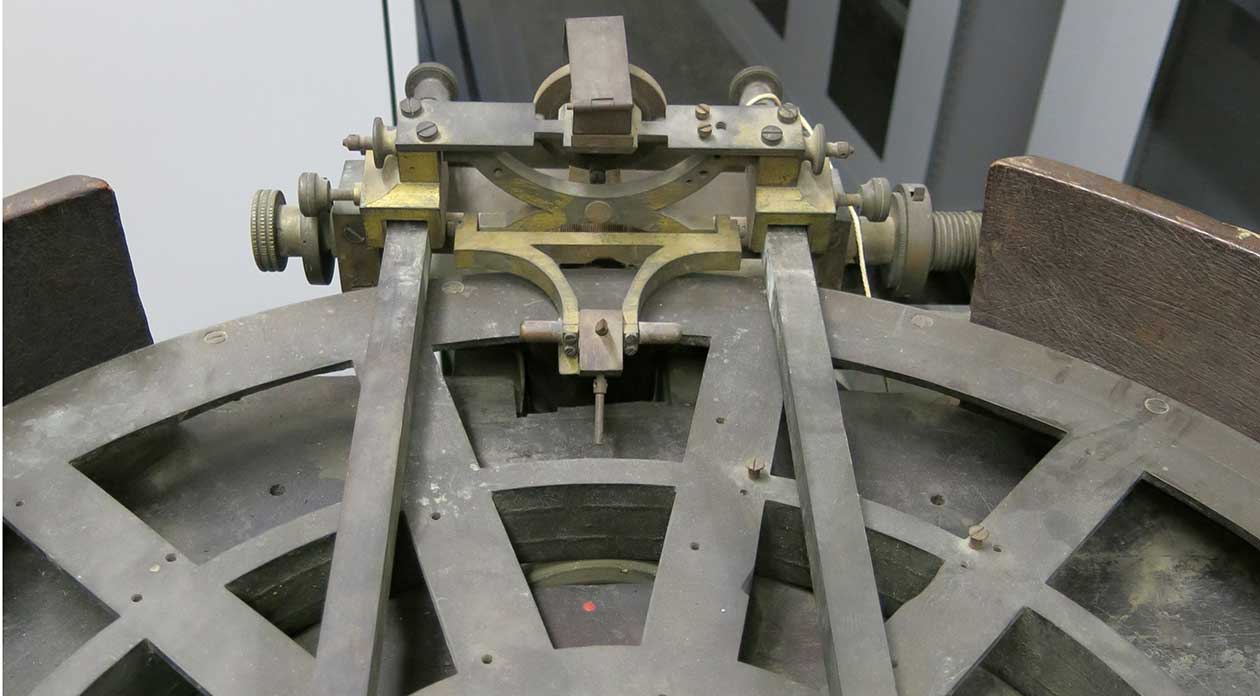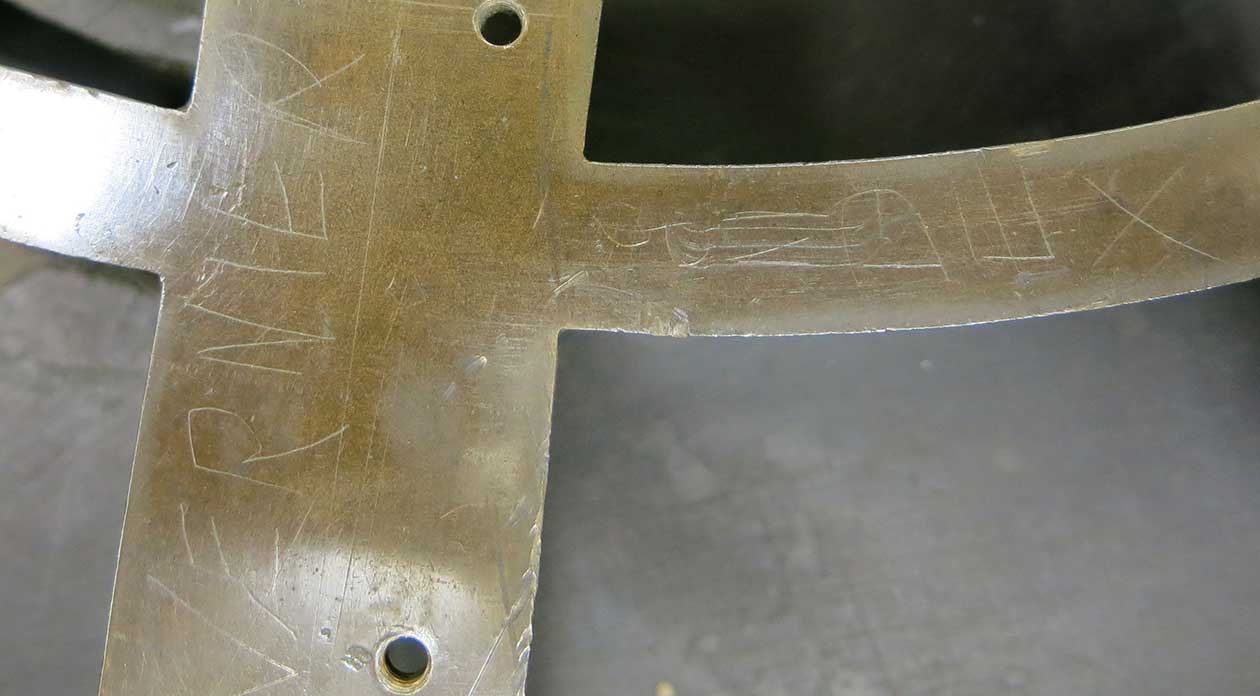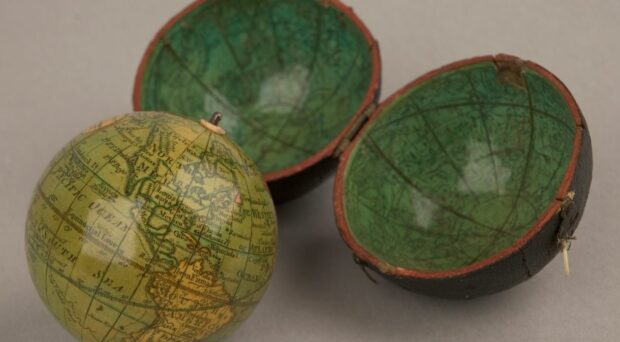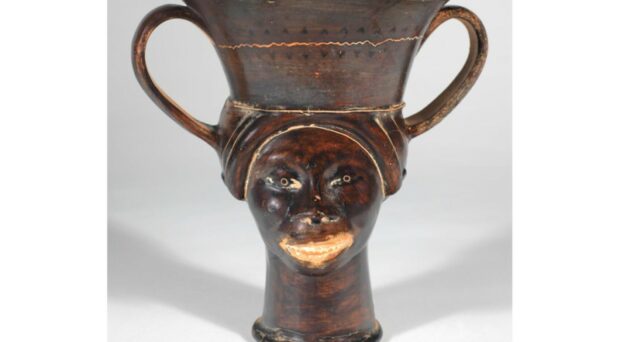Over the summer, staff at the Whipple Museum of the History of Science are preparing for their exhibition ‘Astronomy and Empire’ opening in October 2017. Kirstie Williams, University of Cambridge Museums Organics Conservator, was asked to conserve the Dividing Engine for the exhibition.
First off, what’s a Dividing Engine? A dividing engine is a device that is used to mark graduations on a measuring instrument, for example the lines on a ruler, protractor or sextant.
When presented with an object 1181mm tall and 935mm wide you know it is going to take a while to conserve.

The dividing engine had a thick layer of dust and was tarnished across the surface, making it impossible to see the details of the 360° scale running around the inside of the large dial. Over the course of four weeks I carefully cleaned the object, the metal elements were cleaned using a mild conservation abrasive called Prelim. This was applied using a cotton wool swab and then any residue removed using white spirit. The wooden areas of the object were brush vacuumed and cleaned with a micro fibre cloth. Whilst cleaning the object graffiti was re-discovered with the name ‘Vernier’ and ‘—dex’.

After standing for 38hours (not all at one time!) the conservation was accomplished.
Although the dividing engine has been conserved, the metal elements aren’t ‘shiny’. Originally the object might have had a shine, but as conservators our job is to preserve objects for future generations and not to ‘over-clean’ them, as this could result in the loss of information, for example the lines in the central dial.







